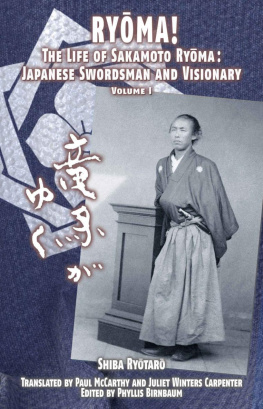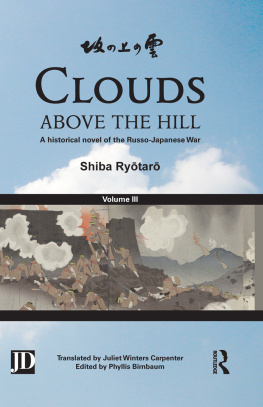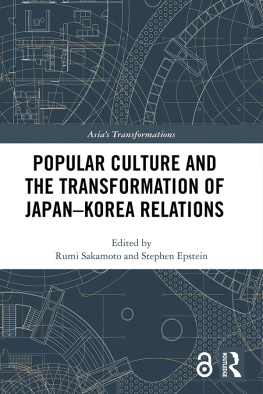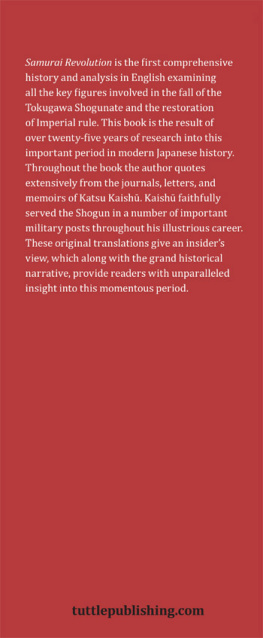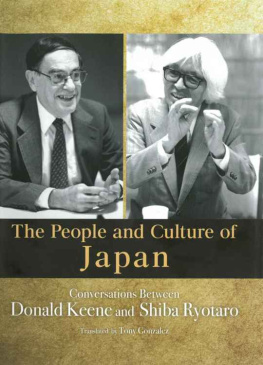Table of Contents
RYMA!
The Life of Sakamoto Ryma:
Japanese Swordsman and Visionary
Volume I
Shiba Rytar

Translated by
Paul McCarthy and Juliet Winters Carpenter
Edited by Phyllis Birnbaum
Originally published as Ryma ga yuku by Bungei Shunjsha, Tokyo, Japan
Copyright 1963 Shiba Rytar.
Copyright 2018 Uemura Yko & Shiba Rytar Memorial Foundation.
English Translation:
Copyright 2018 Takahashi Akira.
All Rights Reserved
No part of this book may be reproduced, or stored in a retrieval system, or transmitted in any form or by any means, electronic, mechanical, photocopying, recording, or otherwise, without express written permission of the publisher.
Cover photo: Sakamoto Ryma Memorial Museum, Kchi, Japan
Calligraphy: Shiba Rytar
Cover design: Ralph Guggenheim, Alligator Planet LLC
Sakamoto Rymas family crest, the Chinese bellflower, appears on the cover and elsewhere in the text
PRINCIPAL CHARACTERS
Chiba Jtar (1824-1885): oldest son of Chiba Sadakichi and expert swordsman of the Hokushin Itt School. He came to know Ryma at the Oke-ch Chiba Dojo in Edo (present-day Tokyo), which was run by his father.
Chiba Sadakichi (1797-1879): head of the Oke-ch Chiba Dojo in Edo, where Ryma was a student. A follower of the Hokushin Itt School of kendo, he came from a family of noted swordsmen. His brother Shsaku headed the Otamagaike Chiba Dojo in Edo.
Chiba Sanako (1838-1896): Chiba Sadakichis daughter and an accomplished swordswoman of the Hokushin Itt School. She came to know Ryma at the Oke-ch Chiba Dojo in Edo, which was run by her father.
Chsokabe: samurai clan from Tosa Province in present-day Kchi Prefecture; achieved its greatest power under Chsokabe Motochika (1539-1599), who gained control of Tosa and the rest of Shikoku. The clan was defeated by Tokugawa Ieyasu during the battle of Sekigahara in 1600. For their services to Ieyasu at that battle, the Yamauchi clan became the rulers of Tosa, while the former retainers of the Chsokabe were driven out of office and became low-ranking gshi. The Sakamoto family were descendants of those Chsokabe retainers
Fukuoka Kunai (1827-1906): house elder of the Tosa domain; older brother of Tazu-sama, one of Rymas love interests. Although the Sakamoto family was rich, they were only lowly gshi, under the patronage and control of House Elder Fukuokas family.
Gompei (1814-1871): Rymas older brother.
Happei (1797-1856): Rymas father.
Ii Naosuke (1815-1860): from a prominent family that provided great elders (akin to premiers) for the shogunate in times of crisis. He signed commercial treaties with the West and tried to minimize the power of the imperial loyalist faction. Author of the severe Ansei Purge, he was assassinated at the Sakurada Gate of the shoguns Edo Castle by members of the loyalist faction.
Itagaki (Inui) Taisuke (1837-1919): upper samurai in Tosa and disciple of Yoshida Ty, the assassinated reformer. He reorganized the Tosa military and led it in the war against the Tokugawa shogunate that led to the Restoration. Later, during the Meiji era, he advocated greater equality of classes and a more representative government. He also advocated an aggressive foreign policy toward Korea, which was not accepted at the time.
Iwasaki Yatar (1834-1885): low-ranking jige rnin of Tosa who, despite his humble beginnings, worked under the important domain official Yoshida Ty. He held a series of official positions in Tosa, and after the Meiji Restoration, he founded the vast Mitsubishi empire.
Katsu Kaish (Rintar) (1823-1899): acting magistrate for warships and mentor of Sakamoto Ryma; captain of the Kanrin Maru, the first modern Japanese ship to cross the Pacific.
Katsura Kogor (Kido Takayoshi) (1833-1877): loyalist leader from Chsh largely responsible for the anti-shogunate alliance of Chsh and Satsuma. He was a friend of Sakamoto Ryma of Tosa and occupied important government posts after the Restoration under his newly adopted name Kido Takayoshi.
Kmei, Emperor (1831-1867): emperor of Japan during the time of this novel, 1846-1867
Mri Takachika (1819-1871): thirteenth and last daimyo of Chsh who was a fierce opponent of the shogunate and a major cause of their downfall.
Nasu Shingo (1829-1863): Tosa gshi and member of Takechi Hampeitas Loyalist Party. Along with Yasuoka Kasuke and ishi Danz, he assassinated Yoshida Ty in 1862.
Otome ( 1832 - 1879 ): Rymas older sister, who was a great influence on his life.
Sakamoto Ryma (1835-1867): master swordsman and Tosa loyalist who was a friend of the Loyalist Partys Takechi Hampeita. Eventually, he became associated with Katsu Kaish, the shogunates naval magistrate, and formed the Kaientai. He helped to arrange the alliance between the Chsh and Satsuma domains, which was crucial to the overthrow of the shogunate.
Shimazu Hisamitsu (1817-1887): regent for his son Tadayoshi, who succeeded Shimazu Nariakira as daimyo of Satsuma, 1859-1868.
Shimazu Nariakira (1809-1858): daimyo of Satsuma 1851-1858.
Takechi Hampeita (Zuizan) (1829-1865): Tosa shirofuda who became a master of swordsmanship and a leader of the radical imperial loyalists. A friend of Sakamoto Ryma, he organized the Tosa Loyalist Party. He was implicated in the assassination of the moderate Tosa reformer Yoshida Ty and eventually forced to perform seppuku.
Tokugawa Iemochi (1846-1866): fourteenth shogun, 1858-1866.
Tokugawa Yoshinobu (Keiki; Hitotsubashi Yoshinobu) (1837-1913): fifteenth and last shogun, 1866-1867.
Yamauchi: samurai clan that supported Tokugawa Ieyasu during the battle of Sekigahara in 1600. After Ieyasus victory, he gave control of Tosa Province to the Yamauchi family, as a reward for their support. The descendants of the samurai whom the Yamauchi clan brought with them to Tosa became upper samurai, while descendants of the defeated Chsokabe, who had been rulers of Tosa, became lowly gshi.
Yamauchi Toyonori (1846-1886): daimyo of Tosa 1859-1871 after forced retirement of Yamauchi Toyoshige (Yd). Though retired, Yd remained a power behind the scenes.
Yamauchi Toyoshige (Yd) (18271872): daimyo of Tosa, 1848-1859. Forced to retire in favor of Toyonori at the time of Iis Ansei Purge, he remained a power behind the throne. One of the most intelligent, cultured daimyo of the late Tokugawa period, he was a moderate reformer, who had sponsored Yoshida Ty and was enraged by his assassination. He harshly suppressed the radical imperial loyalists in Tosa, forcing the death of Takechi Hampeita and others of that group.
Yoshida Shin (1830-1859): imperial loyalist of the late Tokugawa period who was arrested by the shogunate for attempting to leave Japan on a foreign ship when such an act was still illegal. He was later executed for his involvement in an unsuccessful plot to assassinate a high government official who led the suppression of critics of the shogunate. He became a great hero to other loyalists, then and now.
Yoshida Ty (1816-1862): a kind of regent for the daimyo in Tosa whose policies made him many enemies among both the old-guard conservatives and the loyalist radicals. He was assassinated near Kchi Castle by a group of loyalist shishi. Takechi Hampeita was a principal organizer of his murder.

